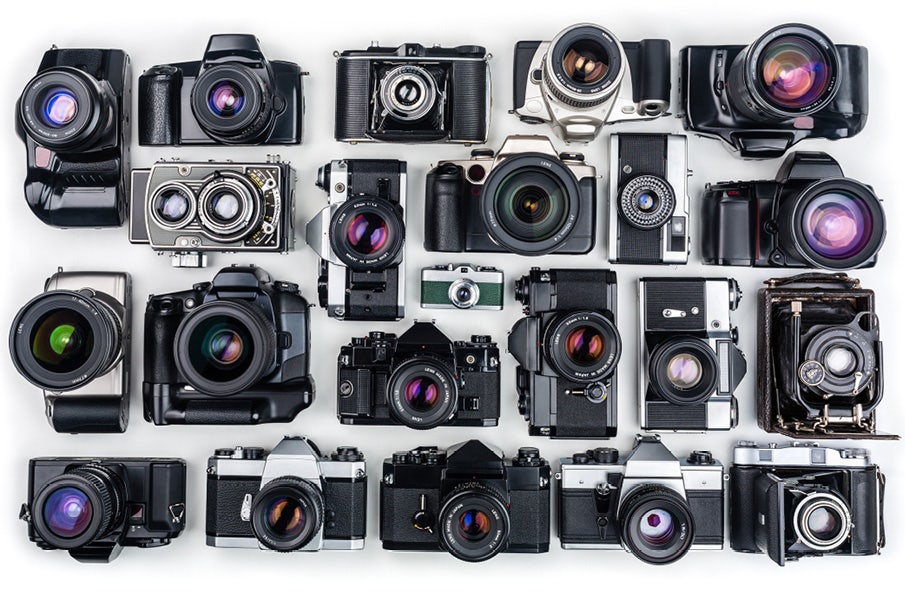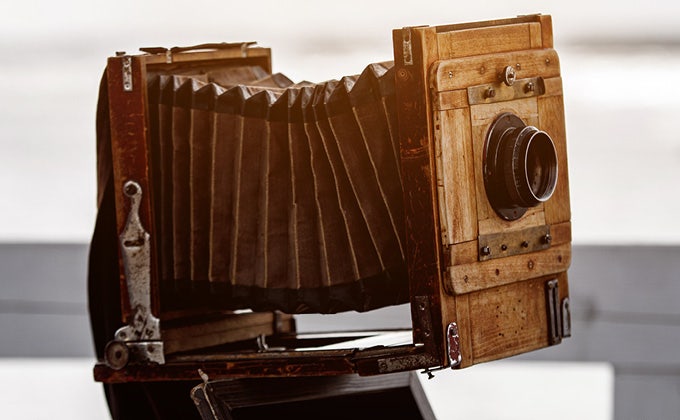
Photography has existed for many centuries and has rapidly evolved with technology. From the origins of Daguerreotypes all the way through to the digital era, cameras have changed the way we capture memories. In this post, we’re going to take you through the history of photography to see how it’s evolved over the years.
The Origins of Photography
Photography first started in the early 19th century with Daguerrotypes. A French artist and inventor by the name of Louis-Jacques-Mandé Daguerre created the first usable type of photography with Daguerrotypes in 1839. These early photographs were developed on silver-plated copper sheets, which resulted in detailed and distinctive images that accurately represented scenes and individuals.
As the first publicly available photography method, Daguerrotypes became widely used during the 1840s and 1850s. This way of producing images inspired other inventions to create more affordable images of higher quality. By the 1860’s other inventions primarily took over the use of the Daguerrotypes.
History of Photography Timeline
- 1839: Daguerreotypes - Daguerrotypes were developed with a silver-plated copper sheet and light-sensitive fumes to produce an image when exposed to light.
- 1851: Collodion Process - The Collodion process uses a piece of glass coated in collodion and other chemicals before being exposed to light in the camera before the plate could dry.
- 1871: Emulsion Plates - A dry process, Emulsion plates are covered in a gelatin emulsion that produces an image when exposed to light.
- 1888: Kodak's First Camera (Box Brownie) - With great commercial success, the Box Brownie was designed with a shutter that allows light to pass through the lens, with the image inverted onto light-sensitive film at the back of the box.
- 1935: Introduction of Kodachrome Color Film - The first coloured film to be successfully commercial, Kodachrome used a subtractive colour method.
- 1948: Polaroid Land Camera - The first camera to self-develop photographs, the Land Camera was incredibly popular and revolutionised traditional darkroom processes.
- 1963: Instant Color Film - Initially only available in black and white, Polaroid later introduced a coloured film variety to work with their instant camera models.
- 1975: First Digital Camera Prototype - Invented by Kodak engineer, Steven Sasson, the camera had a movie camera lens, 16 batteries and could display the images on its screen.
- 1988: First Digital Camera Available to Consumers - Changing the landscape of photography forever, the availability of digital models became incredibly popular very quickly and revolutionised photography.
- 2000s: DSLRs and Mirrorless Cameras - Today’s popular models for professional to amateur photographers, DSLR and Mirrorless models maintain the most renowned models.
- 2010s: Rise of Smartphone Cameras - Smartphones have changed how we take images and videos, with the ease of having a device in our pockets everywhere we go.

The Start of Film Photography
Film photography dramatically changed the way we capture memories and record our surroundings. With the release of the Kodak camera in 1888, George Eastman played a significant role in popularising photography. Born in New York, Eastman founded the Eastman Kodak Company and invented the Kodak camera. He changed the process of photography to integrate a flexible film roll that replaced inconvenient plates that has previously been used in photography.
With the advent of inexpensive and easy photography, the art form became more available to all kinds of people. Film cameras became a popular tool for capturing memories and storytelling and completely changed the way humans preserved moments of history.
History of Colour Photography
A crucial turning point in the development of photography was the introduction of colour photography in 1861. James Clerk Maxwell used the three-colour technique to produce the first colour image. However, colour photography did not become widely accepted until the release of Kodachrome colour film in the middle of the 20th century. This innovation made it possible for photographers to capture the world in all of its vivid hues, opening up new possibilities for visual storytelling.
Kodachrome colour film was invented by Leopold Mannes and Leopold Godowsky before it became commercially available in 1936. The colour film had initially difficulty in preventing the coloured dyes from spreading between the emulsion layers in the film. Eventually, this was overcome by keeping the colour couplers in the developers instead of the emulsion. This meant it was extremely complex to develop Kodachrome film though, as it required 28 different stages in laboratory conditions.
The Rise of the Digital Camera
The digital revolution radically altered photography. Although digital cameras were introduced earlier in the 1970’s it wasn’t until later in the century that they became widely available and popular. Digital photography has been further advanced with the development of DSLR and mirrorless models which have exceptional image quality and manual ability to control the outcome of the image.
More recently, the smartphone has changed how humans record memories and preserve history. With a device that fits in your pocket, they’ve made photography incredibly accessible to even more people, more frequently, in recent years. Smartphones have also been developed to take high-quality images and videos.
The Future of Visual Storytelling
Technology is rapidly evolving and that makes it a really exciting prospect for the future of photography! Visual narrative is changing quickly with the introduction of artificial intelligence, editing abilities and immersive experiences. Cameras, lenses and accessories will all continue to adapt to trends in society and social media. This will mean photographers of all levels should anticipate ground-breaking developments that will push the limits of creativity and expression.
Camera House has been a part of this history for 40 years and continues to be dedicated to providing quality products and advice to our diverse range of customers.
Explore our wide range of digital cameras, lenses, and accessories to find the perfect equipment for your photography needs today, either online or in store today!

